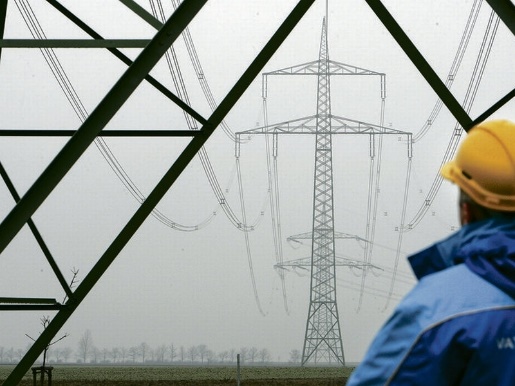Dr.-Ing. Gabriela Molinar
- Member of Scientific Staff
- group: Prof. Stork
- room:
CS 30.10 - phone: +49 721 608-48248
- gabriela molinar ∂does-not-exist.kit edu
- Engesserstr. 5
76131 Karlsruhe
Dr.-Ing. Gabriela Molinar
Résumé:
- Electronics Engineer from the Simón Bolívar University, Venezuela.
- Exchange student at KIT in the period 2013-2014
- Last year of university studies.
- Master Thesis done at ITIV under the supervision of Dipl.-Ing. Kai Worms. Title: “Communication and control interface for photonic powered systems”.
- PhD student at ITIV from April 2016 until November 2020.
Investigation area:
The strong expansion of wind power combined with the increased international electricity trade has brought the electricity transmission grid to its limits. Since the current state of the line (conductor temperature, sag) as well as the weather conditions in the conductor environment (ambient temperature, solar radiation and wind) are usually not known, network operators are often forced to switch off a large number of wind power generators for safety reasons. The operation of the transmission and distribution networks with such an excessively large margin of safety compared to the actual possible current capacity of the line (also called ampacity) results in significant monetary losses.
In order to enable a greater transport of electricity and thus to avoid the shutdown of wind turbines, a considerable expansion of the existing transmission network appears to be necessary. However, the optimization of the existing overhead lines can be achieved with the use of network reserves via overhead line monitoring systems (FLM). With the use of such systems the ampacity of the line can be measured in real-time. This leads to an ampacity increase from 5% to 20% (in some cases up to 50%).
Really important for the Transmission System Operators is also to have a high quality forecast of the ampacity of the electrical network. The simplest solution to calculate future values of the ampacity is with the use of weather forecasting. If the weather conditions are known at a certain point of time and the maximum conductor temperature is fixed (normally around 80°C), the current load capacity of the line can be calculated. For this reason, a network of weather stations along the overhead line is being researched as part of this project. The data are collected and processed in real time in a central unit, in order to have a self-development of a local weather model in the vicinity of the conductor and to use it for an accurate ampacity forecasting.
=> project PrognoNetz (https://www.itiv.kit.edu/6518.php)

Betreute abgeschlossene studentische Arbeiten
- BA: "Entwicklung einer energiesparenden Wake-Up-Pattern-Detection und Portierung des Race Result Active-Transponder-Protokolls auf einen 32-Bit Mikrocontroller"
- BA: "Vergleich der räumlichen Interpolationsverfahren für Wetterdaten und ihre Integration in den selbstlernenden Modellen zur Strombelastbarkeitsprognose des Hochspannungsnetzes; Comparison of Spatial Interpolation Methods for Weather Data and their*"
- BA: "Untersuchung des Einflusses unterschiedlicher Datenaufbereitungsmethoden beim Taining von LSTM und QRF Modellen; Study of the Influence of Different Data Preparation Mehods before Training LSTM and QRF Models"
- BA: "Ampacity Forecasting Accuracy Improvement based on a Dynamic and Automatic Selection over Time of the Best Performing Ensemble Method; Verbesserung der Prognosegenauigkeit der Strombelastbarkeit mittels einer zeitlich dynamischen und automatischen Auswahl"
- MA: "Optimization of Sensor Nodes Distribution for Overhead Line Monitoring Systems Based on Meterological and topographical Features; Optimierung der Sensorknotenverteilung für Freileitungsmonitoringssysteme auf Basis von meterologischen und topographischen*"
- MA: "Evaluierung der Eignung numerischer Wetterprognose und topographischen Daten für Strombelastbarkeitsprognose auf Basis von Machine Learning Methoden; Evaluation of the Suitability of Numerical Weather Prediction and Topographical Data for Tampacity*"
- BA: "Two-day Ahead Ampacity Forecasting of Overhead Lines Based on Parallelized Quantile Regression Forests
- Masterarbeit Development and Evaluation of a few Shot Segmentation Algorithm in Deep Learning for Machine Vision Applications"
- BA: "Implementation of Ensemble Methods to Increase the Accuracy of the Ampacity Forecasting of High Voltage Overhead Lines; Umsetzung Ensembleverfahren zur Genauigkeitserhöhung der Strombelastbarkeitsprognose von Hochspannungsleitungen"
- BA: "Umsetzung eines intelligenten adaptiven Sensornetzwerkes für Freileitungsmonitoringssysteme
- Masterarbeit Objekterkennung mittels Transfer Learning durch Convolutional Neural Networks (CNN) Eine Fallstudie zur automatisierten Mahlzeitenerkennung; Object Recognition Through Transfer with Convolutional Neural Networks (CNN)"
- MA: "Objekterkennung mittels Transfer Learning durch Convolutional Neural Networks (CNN): Object Recognition through Transfer Learning with Convolutional Neural Networks (CNN)"
- MA: "Implementierung und Bewertung eines rekurrenten neuronalen Netzes für die 48-Stunden Strombelastbarkeitsprognose einer Freileitung anhand von Daten aus verteilten Wetterstationen"
- MA: "Quantile Regression Forests Applied to Weather-Based Ampacity Forecasting of Overhead Lines; Wetterbedingte Belastbarkeitsprognose von Freileitungen mittels Quantile Regression Forests"
- BA: "Umsetzung eines energieeffizienten Kommunikationskanals für weitreichende Sensornetzwerke; Implementation of an Energy Efficient Communication Channel for Long-Range Sensor Networks"
- BA: "Umsetzung und Auswertung von Gauß-Prozessen zur Verbesserung der Strombelastbarkeitsprognose von Hochspannungsleitungen; Implementation and Evaluation of Gaussian Processes for the Improvement of Ampacity Forecasts of High Voltage Overhead Lines"
- BA: "Spatial Correlation of Weather Data and its Impact on Weather Forecasting by Means of Machine Learning"
- BA: "Langzeite Belastbarkeit der Freileitungen mittels Klassifizierungsalgorithmen; Long-Term Forecasting of the Maximum Current Capacity of Overhead Lines Using Classification Algorithms"
- BA: "Entwicklung eines Windgeschwindigkeits- zund Windrichtungssensors in 2D mittels der Charakterisierung von Schallwellen; Development of a Wind Speed and Direction Sensor in 2D by Means of a Characterization of Sound Waves"
- MA: "Auswahl, Implementierung und Validierung maschineller Lernalgorithmen für lokale, kurzzeitige Wetterprognosen; Selection, implementation and validation of learning algorithms for local short-term weather forecasting"
- MA: "Entwicklung einer optimierten Zeitsynchronisierung für entfernte Sensorknoten von Freileitungsmonitoringssysteme; Development of an Optimal Synchronization System for Remotely Located Sensor Units of Overhead Line Monitoring Systems"

